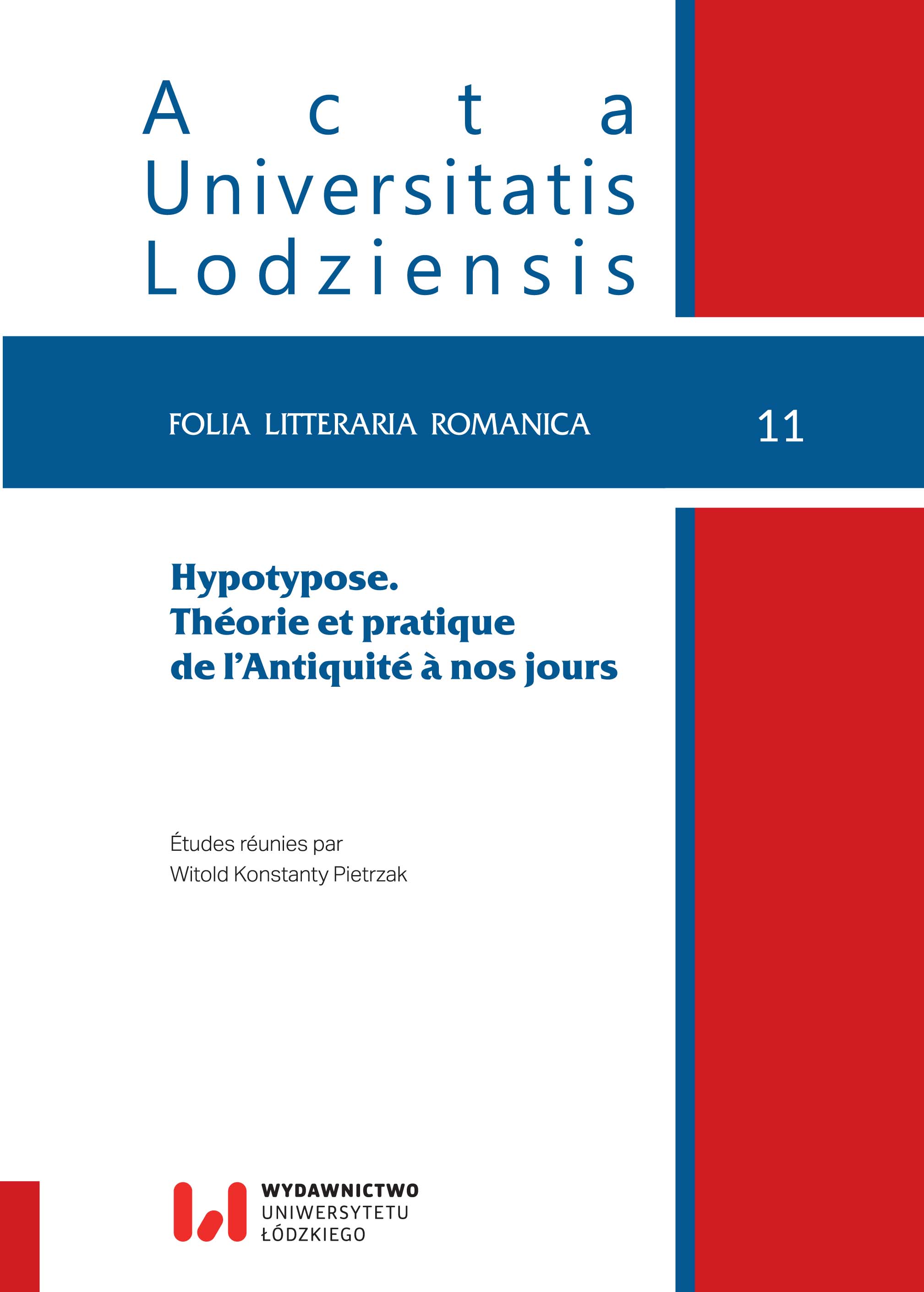La « vive représentation » dans le martyrologe de Crespin et Goulart
DOI:
https://doi.org/10.18778/1505-9065.11.06Słowa kluczowe:
hypotypose, martyrologe protestant, Jean Crespin, Simon GoulartAbstrakt
Les protestants ont condamné le recours aux images dans le culte. Est-ce à dire que l’image littéraire relève de la même méfiance ? L’auteur de l’article se propose de chercher la réponse à cette question en se penchant sur le martyrologe des protestants (1554-1619), conçu par Jean Crespin et poursuivi par Simon Goulart. Crespin voulait que son recueil de martyrs fût composé de pièces authentiques dans lesquelles les victimes pourraient prendre la parole pour déclarer leur foi. Mais, au fil des années, il se fait de plus en plus sensible aux attraits de la « vive représentation », tournure qui, au XVIe siècle, peut désigner tantôt l’ekphrasis, tantôt l’hypotypose. L’analyse de quelques exemples montre que Crespin se plaît déjà à amplifier la scène du supplice au point d’en faire une image persuasive, de nature ekphrastique, et capable d’agir sur les émotions du lecteur. Et, quand finit l’ère des bûchers et que commence celle des guerres civiles, Goulart dépeint les massacres des protestants au moyen de l’hypotypose qui suppose une narration dynamique, relativement asyndétique et privée d’interventions auctorielles.
Pobrania
Bibliografia
Crespin, Jean [sic], Histoire des martyrs, éd. Daniel Benoit, Société des Livres Religieux, t. I-III, 1885-1889
Google Scholar
Du Bellay, Joachim, La Défense et illustration de la langue française, éd. Léon Séché, Paris, E. Sansot et Cie, 1905
Google Scholar
Foxe, John, Acts and Monuments, ed. Stephen Reed Cattley, London, R. B. Seeley and W. Burnside, 1838, Vol. VII
Google Scholar
Ronsard, Pierre de, Abbregé de l’art poetique françoys, in : idem, Œuvres complètes, éd. Jean Céard, Daniel Ménager et Michel Simonin, Paris, Gallimard, « Bibliothèque de la Pléiade », t. II, p. 1174-1189
Google Scholar
Biet, Christian et Fragonard, Marie-Madeleine (dir.), Tragédies et récits de martyres en France (fin XVIe-début XVIIe siècle), Paris, Classiques Garnier, 2012
Google Scholar
Cottin, Jérôme, Le Regard et la Parole. Une théologie protestante de l’image, Genève, Labor et Fides, 1994
Google Scholar
Delarue, Fernand, « Suétone et l’hypotypose », Lalies, 15, 1995, p. 291-300
Google Scholar
Fanlo, Jean-Raymond, « Du monument religieux à l’écriture de l’histoire. La continuation de l’Histoire des martyrs par Simon Goulart », in : Simon Goulart, un pasteur aux intérêts vastes comme le monde, éd. Olivier Pot, Genève, Droz, 2013, p. 159-172
Google Scholar
Galand-Hallyn, Perrine, Les Yeux de l’éloquence. Poétiques humanistes de l’« évidence », Orléans, Paradigme, 1995
Google Scholar
Gordon, Alex L., « Les figures de rhétorique au XVIe siècle », L’Information Grammaticale, no 75, 1997, p. 15-21
Google Scholar
Goyet, Francis, « De la rhétorique à la création : hypotypose, type, pathos », in : La Rhétorique : enjeux de ses résurgences, sous la dir. de Jean Gayon, Jacques Poirier, Jean-Claude Gens, Bruxelles, OUSIA, 1998, p. 46-67
Google Scholar
Le Bozec, Yves, « L’hypotypose : un essai de définition formelle », L’Information Grammaticale, no 92, 2002, p. 3-7
Google Scholar
Lestringant, Frank, Lumière des martyrs. Essai sur le martyre au siècle des Réformes, Paris, Classiques Garnier, 2015 (1re éd. 2004)
Google Scholar
Lestringant, Frank, « L’écriture du martyrologe : Richard Verstegan et Matthieu de Launoy », in : Écritures de l’Histoire : XIVe-XVIe siècle, Actes du Colloque du Centre Montaigne, Bordeaux, 19-21 septembre 2002, éd. Danièle Bohler, Catherine Magnien-Simonin, Genève, Droz, 2005, p. 433-453
Google Scholar
Pietrzak, Witold Konstanty, Le Tragique dans les nouvelles exemplaires en France au XVIe siècle, Łódź, Wydawnictwo Uniwersytetu Łódzkiego, 2006
Google Scholar
Pittion, Jean-Paul, « Martyrium passio, triumphus Causae : le martyrologe au temps des Réformes », in : Manipulation, mystification, endoctrinement, textes publiés par Witold Konstanty Pietrzak et Anita Staroń, Folia Litteraria Romanica, no 6, Łódź, Wydawnictwo Uniwersytetu Łódzkiego, 2008, p. 59-71
Google Scholar
Randall Coats, Catharine, (Em)bodying the Word. Textual Resurrections in the Martyrological Narratives of Foxe, Crespin, de Bèze and d’Aubigné, New York et al., Peter Lang, 1992
Google Scholar
Tucker, Jameson, “From Fire to Iron: Martyrs and Massacre Victims in Genevan Martyrology”, in : Dying, Death, Burial and Commemoration in Reformation Europe, ed. Elizabeth C. Tingle, Jonathan Willis, Burlington, Ashgate, 2015, p. 157-174
Google Scholar
Zangara, Adriana, Voir l’histoire. Théories anciennes du récit historique, Paris, Vrin / EHESS, 2007
Google Scholar
Pobrania
Opublikowane
Jak cytować
Numer
Dział
Licencja

Utwór dostępny jest na licencji Creative Commons Uznanie autorstwa – Użycie niekomercyjne – Bez utworów zależnych 4.0 Międzynarodowe.













